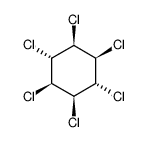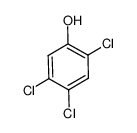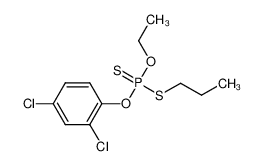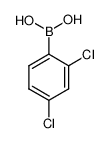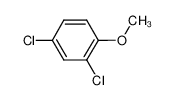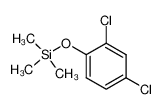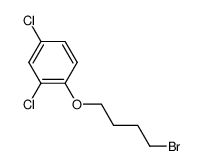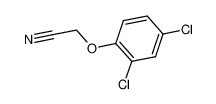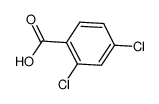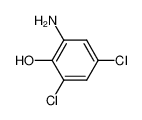| Product name | 2,4-dichlorophenol |
|---|
| Product number | - |
|---|---|
| Other names | 2,4-DCP |
| Identified uses | For industry use only. Intermediates |
|---|---|
| Uses advised against | no data available |
| Company | MOLBASE (Shanghai) Biotechnology Co., Ltd. |
|---|---|
| Address | Floor 4 & 5, Building 12, No. 1001 North Qinzhou Road, Xuhui District, Shanghai, China |
| Telephone | +86(21)64956998 |
| Fax | +86(21)54365166 |
| Emergency phone number | +86-400-6021-666 |
|---|---|
| Service hours | Monday to Friday, 9am-5pm (Standard time zone: UTC/GMT +8 hours). |
Acute toxicity - Oral, Category 4
Acute toxicity - Dermal, Category 3
Skin corrosion, Category 1B
Hazardous to the aquatic environment, long-term (Chronic) - Category Chronic 2
2.2 GHS label elements, including precautionary statements| Pictogram(s) |  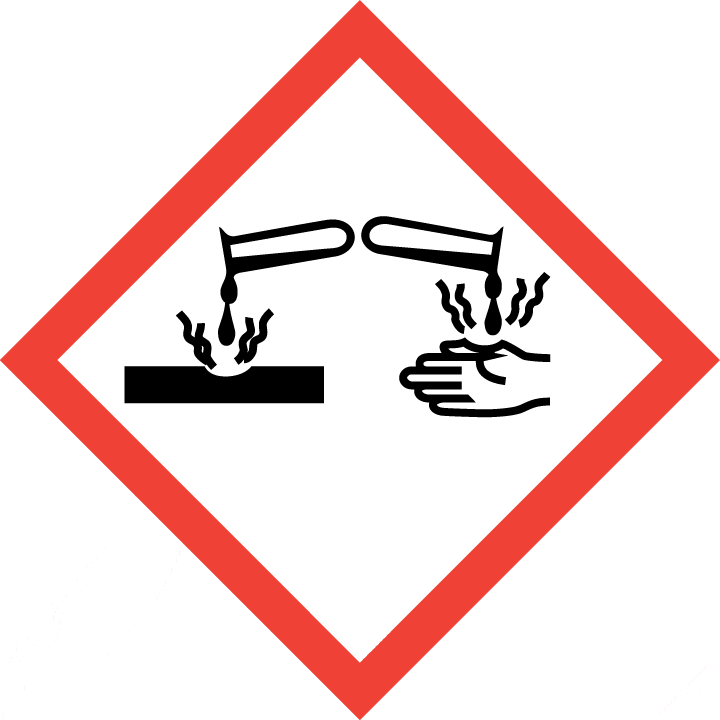  |
|---|---|
| Signal word | Danger |
| Hazard statement(s) | H302 Harmful if swallowed H311 Toxic in contact with skin H314 Causes severe skin burns and eye damage H411 Toxic to aquatic life with long lasting effects |
| Precautionary statement(s) | |
| Prevention | P264 Wash ... thoroughly after handling. P270 Do not eat, drink or smoke when using this product. P280 Wear protective gloves/protective clothing/eye protection/face protection. P260 Do not breathe dust/fume/gas/mist/vapours/spray. P273 Avoid release to the environment. |
| Response | P301+P312 IF SWALLOWED: Call a POISON CENTER/doctor/…if you feel unwell. P330 Rinse mouth. P302+P352 IF ON SKIN: Wash with plenty of water/... P312 Call a POISON CENTER/doctor/…if you feel unwell. P321 Specific treatment (see ... on this label). P361+P364 Take off immediately all contaminated clothing and wash it before reuse. P301+P330+P331 IF SWALLOWED: Rinse mouth. Do NOT induce vomiting. P303+P361+P353 IF ON SKIN (or hair): Take off immediately all contaminated clothing. Rinse skin with water [or shower]. P363 Wash contaminated clothing before reuse. P304+P340 IF INHALED: Remove person to fresh air and keep comfortable for breathing. P310 Immediately call a POISON CENTER/doctor/… P305+P351+P338 IF IN EYES: Rinse cautiously with water for several minutes. Remove contact lenses, if present and easy to do. Continue rinsing. P391 Collect spillage. |
| Storage | P405 Store locked up. |
| Disposal | P501 Dispose of contents/container to ... |
none
3.Composition/information on ingredients 3.1 Substances| Chemical name | Common names and synonyms | CAS number | EC number | Concentration |
|---|---|---|---|---|
| 2,4-dichlorophenol | 2,4-dichlorophenol | 120-83-2 | none | 100% |
Consult a physician. Show this safety data sheet to the doctor in attendance.
If inhaledFresh air, rest. Half-upright position. Refer immediately for medical attention.
In case of skin contactWear protective gloves when administering first aid. Remove contaminated clothes. See Notes. To remove substance use polyethylene glycol 400 or vegetable oil. Rinse skin with plenty of water or shower. Refer immediately for medical attention.
In case of eye contactRinse with plenty of water (remove contact lenses if easily possible). Refer immediately for medical attention.
If swallowedRinse mouth. Do NOT induce vomiting. Refer immediately for medical attention.
4.2 Most important symptoms/effects, acute and delayedTremors, convulsions, shortness of breath, inhibition of respiratory system. (USCG, 1999)
4.3 Indication of immediate medical attention and special treatment needed, if necessaryImmediate first aid: Ensure that adequate decontamination has been carried out. If patient is not breathing, start artificial respiration, preferably with a demand-valve resuscitator, bag-valve-mask device, or pocket mask, as trained. Perform CPR as necessary. Immediately flush contaminated eyes with gently flowing water. Do not induce vomiting. If vomiting occurs, lean patient forward or place on left side (head-down position, if possible) to maintain an open airway and prevent aspiration. Keep patient quiet and maintain normal body temperature. Obtain medical attention. /Phenols and related compounds/
5.Fire-fighting measures 5.1 Extinguishing media Suitable extinguishing mediaAlcohol foam, foam, carbon dioxide, dry chemical.
5.2 Specific hazards arising from the chemicalSpecial Hazards of Combustion Products: Toxic gases can be evolved. Behavior in Fire: Solid melts and burns. (USCG, 1999)
5.3 Special protective actions for fire-fightersWear self-contained breathing apparatus for firefighting if necessary.
6.Accidental release measures 6.1 Personal precautions, protective equipment and emergency proceduresUse personal protective equipment. Avoid dust formation. Avoid breathing vapours, mist or gas. Ensure adequate ventilation. Evacuate personnel to safe areas. Avoid breathing dust. For personal protection see section 8.
6.2 Environmental precautionsPersonal protection: chemical protection suit including self-contained breathing apparatus. Do NOT let this chemical enter the environment. Sweep spilled substance into covered containers. If appropriate, moisten first to prevent dusting. Carefully collect remainder. Then store and dispose of according to local regulations.
6.3 Methods and materials for containment and cleaning upActivated carbon is a good method for removing chlorophenols from water. Competitive adsorption occurs between chlorophenols & humic substances present in nearly all municipal water supplies. This competition decr the capacity of carbon for chlorophenols. /Chlorophenols/
7.Handling and storage 7.1 Precautions for safe handlingAvoid contact with skin and eyes. Avoid formation of dust and aerosols. Avoid exposure - obtain special instructions before use.Provide appropriate exhaust ventilation at places where dust is formed. For precautions see section 2.2.
7.2 Conditions for safe storage, including any incompatibilitiesFireproof. Store in an area without drain or sewer access. Provision to contain effluent from fire extinguishing. Separated from strong oxidants and food and feedstuffs. Ventilation along the floor.SRP: Local exhaust ventilation should be applied wherever there is an incidence of point source emissions or dispersion of regulated contaminants in the work area. Ventilation control of the contaminant as close to its point of generation is both the most economical and safest method to minimize personnel exposure to airborne contaminants.
8.Exposure controls/personal protection 8.1 Control parameters Occupational Exposure limit valuesno data available
Biological limit valuesno data available
8.2 Appropriate engineering controlsHandle in accordance with good industrial hygiene and safety practice. Wash hands before breaks and at the end of workday.
8.3 Individual protection measures, such as personal protective equipment (PPE) Eye/face protectionSafety glasses with side-shields conforming to EN166. Use equipment for eye protection tested and approved under appropriate government standards such as NIOSH (US) or EN 166(EU).
Skin protectionWear impervious clothing. The type of protective equipment must be selected according to the concentration and amount of the dangerous substance at the specific workplace. Handle with gloves. Gloves must be inspected prior to use. Use proper glove removal technique(without touching glove's outer surface) to avoid skin contact with this product. Dispose of contaminated gloves after use in accordance with applicable laws and good laboratory practices. Wash and dry hands. The selected protective gloves have to satisfy the specifications of EU Directive 89/686/EEC and the standard EN 374 derived from it.
Respiratory protectionWear dust mask when handling large quantities.
Thermal hazardsno data available
9.Physical and chemical properties| Physical state | white to off-white crystalline solid |
|---|---|
| Colour | COLORLESS CRYSTALS OR NEEDLES |
| Odour | Strong medicinal |
| Melting point/ freezing point | 216°C(lit.) |
| Boiling point or initial boiling point and boiling range | 210°C(lit.) |
| Flammability | Combustible. Gives off irritating or toxic fumes (or gases) in a fire. |
| Lower and upper explosion limit / flammability limit | no data available |
| Flash point | 47°C(lit.) |
| Auto-ignition temperature | 500°C |
| Decomposition temperature | no data available |
| pH | no data available |
| Kinematic viscosity | no data available |
| Solubility | In water:4.5 g/L (20 ºC) |
| Partition coefficient n-octanol/water (log value) | log Kow = 3.06 |
| Vapour pressure | 0.136mmHg at 25°C |
| Density and/or relative density | 1.383 |
| Relative vapour density | 5.62 (Relative to Air) |
| Particle characteristics | no data available |
no data available
10.2 Chemical stabilityStable under recommended storage conditions.
10.3 Possibility of hazardous reactionsCombustible when exposed to heat or flame.Dust explosion possible if in powder or granular form, mixed with air. If dry, it can be charged electrostatically by swirling, pneumatic transport, pouring, etc.2,4-DICHLOROPHENOL can react vigorously with oxidizing agents. Can also react with acids or acid fumes. Incompatible with acid chlorides and acid anhydrides.
10.4 Conditions to avoidno data available
10.5 Incompatible materials... Can react vigorously with oxidizing materials.
10.6 Hazardous decomposition productsWhen heated to decomposition ... it emits highly toxic fumes of /hydrogen chloride/.
11.Toxicological information Acute toxicity- Oral: LD50 Rat oral 580 mg/kg
- Inhalation: no data available
- Dermal: no data available
no data available
Serious eye damage/irritationno data available
Respiratory or skin sensitizationno data available
Germ cell mutagenicityno data available
CarcinogenicityEvaluation: There is limited evidence in humans for the carcinogenicity of combined exposures to polychlorophenols or to their sodium salts. There is evidence suggesting lack of carcinogenicity of 2,4-dichlorophenol in experimental animals. ... Overall evaluation: Combined exposures to polychlorophenols or to their sodium salts are possibly carcinogenic to humans (Group 2B). /Polychlorophenols and their sodium salts/
Reproductive toxicityno data available
STOT-single exposureno data available
STOT-repeated exposureno data available
Aspiration hazardno data available
12.Ecological information 12.1 Toxicity- Toxicity to fish: LC50; Species: Danio rerio (Zebra danio); Conditions: static; Concentration: 3900 ug/L for 96 hr
- Toxicity to daphnia and other aquatic invertebrates: EC50; Species: Daphnia magna (Water flea); Conditions: freshwater, renewal; Concentration: 3900 ug/L for 24 hr; Effect: behavior, equilibrium
- Toxicity to algae: EC50; Species: Pseudokirchneriella subcapitata (Green algae); Conditions: freshwater, static; Concentration: 14000 ug/L for 96 hr; Effect: growth, general
- Toxicity to microorganisms: no data available
AEROBIC: Using a static-culture flask-screening procedure with a settled wastewater inoculum, 2,4-dichlorophenol was found to be degradable with rapid microbial adaptation as 99-100% of initial concentration were degraded within 7 days(1). Using a Warburg respirometer and phenol-adapted bacteria (bacteria isolated from garden soil, river mud, compost and waste lagoon sediment), 95% of initial 2,4-dichlorophenol (200 ppm) was degraded within 7-10 days(2). Based on COD determination, 98% of initial 2,4-dichlorophenol was degraded in a BOD system with an activated sludge inoculum during a 20-day inoculation period(3). When activated sludge was exposed to 2,4-dichlorophenol at levels of 100 mg/L of sludge, 75% of the chemical disappeared in two days, and essentially 100% was gone in five days(4). However, 2,4-dichlorophenol, present at 100 mg/L, reached 0% of its theoretical BOD in 4 weeks using an activated sludge inoculum in the Japanese MITI test(5).
12.3 Bioaccumulative potentialA BCF range of 7.1 to 69 was calculated in fish for 2,4-dichlorophenol(SRC), using carp (Cyprinus carpio) which were exposed to 30 ppb test compound over an 8-week period(1). The BCF of 2,4-dichlorophenol in goldfish ranged from 34 to 100(3,4); the BCF in an unspecified fish specie was 100(3) and in trout was 10(4). According to a classification scheme(2), these BCF values suggest the potential for bioconcentration in aquatic organisms is low to moderate(SRC). The BCF of 2,4-dichlorophenol in algae ranged from 257 to 263(3,4).
12.4 Mobility in soilThe Koc of 2,4-dichlorophenol ranged from approximately 200 to 5,000 in soil adsorption studies using five mineral soils(1); the most important factors controlling the degree of adsorption were pH and percentage of iron oxide in the soil(1). In batch soil adsorption experiments conducted at pH 10, 2,4-dichlorophenol exhibited a soil equilibrium partition coefficient (Kp) of 0.0+/-0.5 indicating that adsorption was not occurring(2); 2,4-dichlorophenol has a pKa of 7.8 at 20°C which indicates that it will exist predominantly in the ionized form at pH 10(2); ionized phenols will generally not sorb to neutral or negatively charged soil organic matter as well as the non-dissociated form(2). The adsorption of the dichlorophenol isomers (including 2,4-dichlorophenol) onto Wyoming bentonite clay was found to be pH dependent with maximum adsorption occurring when ionization of the isomers was less than 50% based on pKa values(3). A 2,4-dichlorophenol Koc of 126 was measured in a clay loam soil from Michigan State University(4).
12.5 Other adverse effectsno data available
13.Disposal considerations 13.1 Disposal methods ProductThe material can be disposed of by removal to a licensed chemical destruction plant or by controlled incineration with flue gas scrubbing. Do not contaminate water, foodstuffs, feed or seed by storage or disposal. Do not discharge to sewer systems.
Contaminated packagingContainers can be triply rinsed (or equivalent) and offered for recycling or reconditioning. Alternatively, the packaging can be punctured to make it unusable for other purposes and then be disposed of in a sanitary landfill. Controlled incineration with flue gas scrubbing is possible for combustible packaging materials.
14.Transport information 14.1 UN Number| ADR/RID: UN2020 | IMDG: UN2020 | IATA: UN2020 |
| ADR/RID: CHLOROPHENOLS, SOLID |
| IMDG: CHLOROPHENOLS, SOLID |
| IATA: CHLOROPHENOLS, SOLID |
| ADR/RID: 6.1 | IMDG: 6.1 | IATA: 6.1 |
| ADR/RID: III | IMDG: III | IATA: III |
| ADR/RID: yes | IMDG: yes | IATA: yes |
no data available
14.7 Transport in bulk according to Annex II of MARPOL 73/78 and the IBC Codeno data available
15.Regulatory information 15.1 Safety, health and environmental regulations specific for the product in question| Chemical name | Common names and synonyms | CAS number | EC number |
|---|---|---|---|
| 2,4-dichlorophenol | 2,4-dichlorophenol | 120-83-2 | none |
| European Inventory of Existing Commercial Chemical Substances (EINECS) | Listed. | ||
| EC Inventory | Listed. | ||
| United States Toxic Substances Control Act (TSCA) Inventory | Listed. | ||
| China Catalog of Hazardous chemicals 2015 | Listed. | ||
| New Zealand Inventory of Chemicals (NZIoC) | Listed. | ||
| Philippines Inventory of Chemicals and Chemical Substances (PICCS) | Listed. | ||
| Vietnam National Chemical Inventory | Not Listed. | ||
| Chinese Chemical Inventory of Existing Chemical Substances (China IECSC) | Listed. | ||
| Creation Date | Aug 10, 2017 |
|---|---|
| Revision Date | Aug 10, 2017 |
- CAS: Chemical Abstracts Service
- ADR: European Agreement concerning the International Carriage of Dangerous Goods by Road
- RID: Regulation concerning the International Carriage of Dangerous Goods by Rail
- IMDG: International Maritime Dangerous Goods
- IATA: International Air Transportation Association
- TWA: Time Weighted Average
- STEL: Short term exposure limit
- LC50: Lethal Concentration 50%
- LD50: Lethal Dose 50%
- EC50: Effective Concentration 50%
- IPCS - The International Chemical Safety Cards (ICSC), website: http://www.ilo.org/dyn/icsc/showcard.home
- HSDB - Hazardous Substances Data Bank, website: https://toxnet.nlm.nih.gov/newtoxnet/hsdb.htm
- IARC - International Agency for Research on Cancer, website: http://www.iarc.fr/
- eChemPortal - The Global Portal to Information on Chemical Substances by OECD, website: http://www.echemportal.org/echemportal/index?pageID=0&request_locale=en
- CAMEO Chemicals, website: http://cameochemicals.noaa.gov/search/simple
- ChemIDplus, website: http://chem.sis.nlm.nih.gov/chemidplus/chemidlite.jsp
- ERG - Emergency Response Guidebook by U.S. Department of Transportation, website: http://www.phmsa.dot.gov/hazmat/library/erg
- Germany GESTIS-database on hazard substance, website: http://www.dguv.de/ifa/gestis/gestis-stoffdatenbank/index-2.jsp
- ECHA - European Chemicals Agency, website: https://echa.europa.eu/






